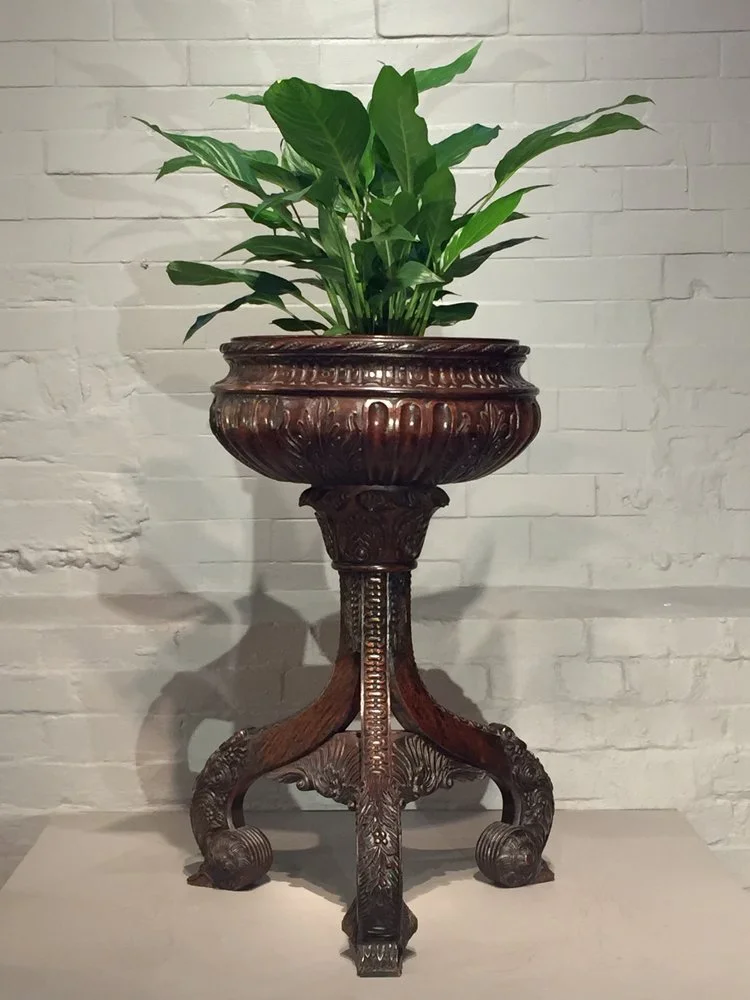Entrepreneurs: Veteran connoisseurs John Bly Antiques on bringing rare finds into the 21st century
Antique furniture might sit just below DVD players and (meat) sausage rolls on millennials’ shopping lists but veteran antique dealer John Bly and his son James are on a mission to change that.
The Blys, fifth-generation antique experts, run a richly stocked emporium of 18th- and 19th-century pieces on King’s Road in Chelsea, attracting everyone from Kylie Minogue to Rod Stewart with its offering of Georgian bookcases and mahogany armchairs.
Rolling Stones drummer Charlie Watts is another regular who pops into the shop on occasions, perusing antique silver.
“He is the smartest around,” says John Bly. “He has the most beautifully cut coats and jackets and I said any cast-offs, you’ve got to let me know.”
The father-and-son team, who opened the store in 2013, are keen to hook in younger buyers, with their Etsy, eBay and Ikea-shopping ways, to the lustre of antiques and attract wealthy types in Tech City and Canary Wharf.
They plan to host a programme of workshops for people “not interested” in the topic to help open their eyes to a different type of luxury brand.
Bly the elder, a sprightly 79-year-old who has the ringmaster’s charm of someone comfortable on TV (he was a regular on BBC Antiques Roadshow for many years), gives me a lesson on cabriole chairlegs and the history of the dumb waiter. It’s part design course, part social history.
James Bly, who joined his father’s business in 1995, says: “There is a generation of people who went antique shopping that had a vague understanding of antiques but that has skipped two generations now and part of our job is to put that right.”
The Bly business turns over more than £1 million a year and is as much steeped in the social history of England as some of the goods it sells.
Started in 1891 by Bly’s grandfather but with roots stretching back to the 1820s, it originally sold rare items of furniture and hard to find imports to the Rothschild family, who had their Tring Park Mansion in the Blys’ Hertfordshire village (the family workshop, where Bly was born, sat opposite the banking family’s country house).
The firm moved to London in 1991 with a small showroom — “located conveniently and expensively close to Wilton’s restaurant” — due to another major social shift of the period: changing dining habits.
The business had originally served middle-management types who had to furnish their country homes but rapid gentrification in London during the late Eighties meant more pied-à-terres and people eating out rather than entertaining at home, ending the need for fancy dining tables, chairs and sideboards.
They increasingly tapped into the influx of wealthy European elites and put their wares on the High Street for customers to browse.
Bly senior, dressed today in a double-breasted jacked and colourful cravat, says the antiques business is all about “theatre”, comparing it to going to a “good restaurant” and saying it’s “fun” selling to buyers who like to haggle.
He lets me sit down in a £68,000 chair from the 1740s while giving me a quick social history of chairs made in China during the 18th century, offering a glimpse into his art of the deal.
At the same time the antiques business is much like any other retail industry, prone to swings and tough times.
American buyers — the biggest cohort of antique shoppers — dried up after the Gulf War and 9/11, and the firm was forced to leave London and regroup in Tring in 2005 due to rising rents.
Sales can also be unpredictable and the Blys confess that trading in the industry at the moment is “patchy” despite picking up a bit towards Christmas and then there’s online.
James Bly, who is driving many of its new initiatives, sells through antique portals like 1stdibs.com and onlinegalleries.com but maintains getting people through the door is still the key.
“It comes down to enticing people into the gallery. Nobody has the story or the stock we have,” says the 45-year old.
Rare antique shopping isn’t immediately obvious as a must-do weekend activity compared with a trip to Westfield. Has it gone out of fashion?
“You could argue that,” says James, “but again this comes down to a generation of people who have not been immersed in antiques shopping.
“Even if you have a modern interior one or two antiques would look spectacular. A London wharf apartment, one or two bits would stand out and look amazing.”
Click here to link to the Evening Standard interview




